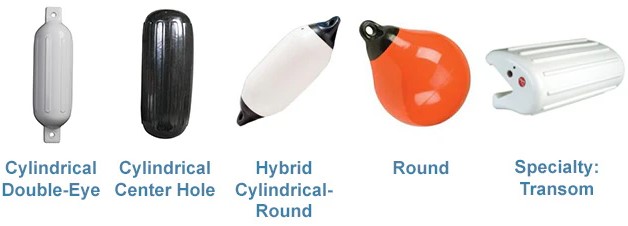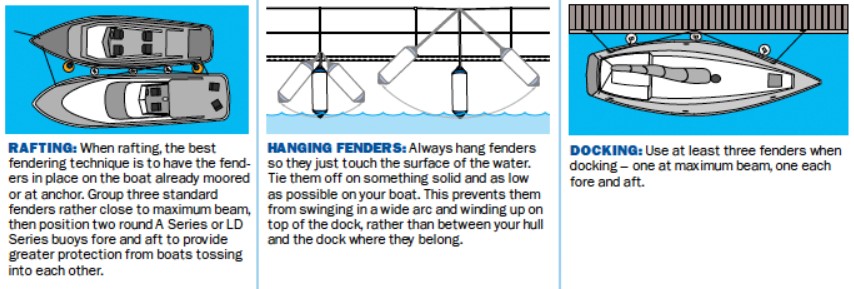Boat Fenders 101 – Protect your investment
Essential Guide to Boat Fenders:
Boat fenders, which are commonly referred to as “bumpers,” are an essential accessory for all boat owners. These crucial pieces of marine equipment have a rich history that dates back to the time when sailors used bundles of rope or cloth to protect their vessels. Nowadays, they serve as the primary line of defense, safeguarding your investment from harsh impacts and abrasive encounters with docks, piers, and other boats.
The Purpose of Boat Fenders:
Boat fenders play a crucial role in preventing damage to the boat during docking or mooring. They work by absorbing shock and acting as a cushion, thereby reducing the impact of the boat against hard surfaces. This is especially important in challenging docking conditions like strong winds or currents. Boat fenders are also used to protect the boat during rafting, where multiple boats are docked alongside each other.
Types of Boat Fenders:
- Cylindrical Fenders: These are the most common, suitable for most boats and known for their adaptability.
- Round (Spherical) Fenders: Best for larger vessels, these fenders offer significant protection due to their substantial surface area.
- Flat Fenders: Ideal for smaller boats or tight storage, they offer protection without taking up too much room.
- Specialty Fenders: These include transom, corner, and pontoon fenders, each designed for a specific area of the boat or docking situation.

Materials Used:
Vinyl and PVC are popular for their durability and easy-to-clean properties. Closed-cell foam is another choice recognized for its impressive shock-absorbing capabilities. The longevity of a boat fender is tightly connected to its material, with some materials more resistant to UV rays and marine pollutants than others.
Size and Placement:
Selecting the right size is crucial—a general rule of thumb is that for every 4-5 feet of boat length, a 1-inch diameter of cylindrical fender is used. Typically, three fenders are adequate for boats up to 40 feet, but larger boats will require more. Placement should be at the widest point of the hull and at areas most likely to come into contact with docks or other vessels.

Attachment and Adjustment: Fenders should be tied to areas on the boat that can bear loads, such as cleats or rails, and the height should be adjusted such that the fender is just above water level.
To tie fenders to the boat, use a fender line through the fender’s eye or center tube and attach it to a cleat or railing. Knots used can include a clove hitch or a fender knot for quick adjustments. It’s important to consider the tidal range when setting the height of your fenders – they should protect the boat at both high and low tide.
Maintenance and Care:
Keeping fenders clean extends their life and maintains their appearance. Mild soap and water typically suffice, and there are special fender cleaners available for stubborn stains. Regularly check fender inflation; they should be firm but not overly inflated as this reduces their effectiveness. During the offseason, fenders should be deflated slightly, cleaned, and stored in a dry, cool place out of direct sunlight.
Innovations in Boat Fender Technology:
Recent years have seen the introduction of ‘smart fenders’ equipped with sensors to alert owners of impacts or potential hazards. Other innovations include fenders made from environmentally friendly materials or featuring adjustable inflation levels for varying conditions.
Environmental Considerations:
Eco-friendly boat fenders are now more accessible, made from recycled materials or designed to be recyclable. Proper disposal of old fenders is crucial to avoid environmental harm. Consult local regulations or recycling programs for the best disposal practices.
Conclusion:
Selecting, using, and maintaining the right boat fenders can make a significant difference in the protection of your vessel. By investing in quality fenders and practicing attentive care, boaters can sail with confidence, knowing their vessel is well-protected against the unpredictable conditions at sea and in the dock.




